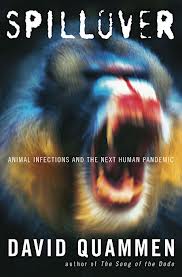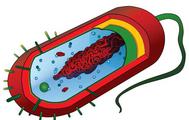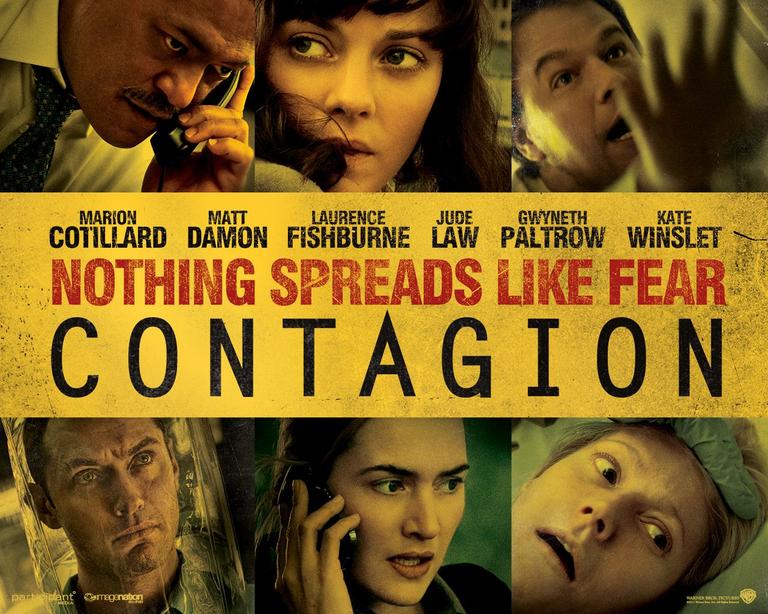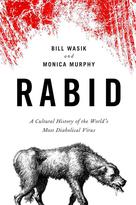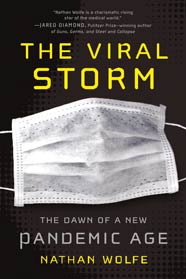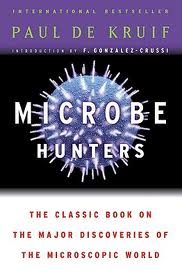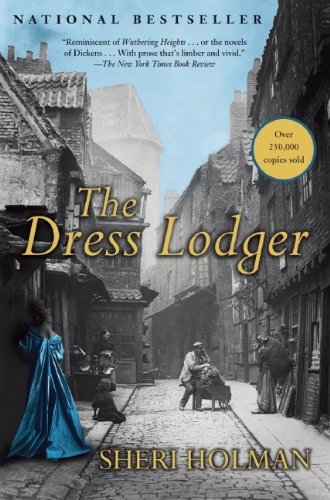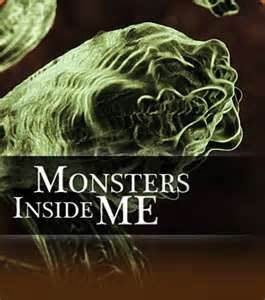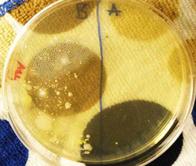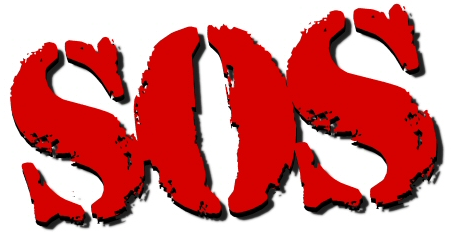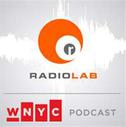 | ||||
Microbiology Course Reading Recommendations
Microbiology Course Reading List
Reading Recommendations for Students of Medical Microbiology
 | ||||||
Image of prokaryotic cell. For labeled diagram of same cell, click here.
SCIENCE PHOTOS
More Useful Microbiology Resources
- Microbe Wiki, Kenyon College
- I Love Bacteria website
- Microbe World, American Society of Microbiology
- Microbiology Flashcards from Quizlet
- For additional resources see our Microbiology Education Links page.
What might happen if a deadly new infectious disease hit the scene?
The film "Contagion" provides an excellent opportunity to learn about infectious disease, how it spreads and which organizations would be involved in tracking and controlling a dangerous outbreak.
Completing the Contagion Extra Credit Assignment will help you better understand this complex film.
SPO VIRTUAL CLASSROOMS
 | ||||
On 9/18/12 the National Public Radio (NPR) show Talk of the Nation featured a story on superbug antibiotic resistant strains of Klebsiella pneumoniae: "Hospitals Fight To Stop Superbugs' Spread". This is important information on scary new bugs and what healthcare institutions are doing to protect their patients and employees.
Click here for a Virtual Microbiology Classroom assignment to go with the story.
Below is a list of books that I use in my live classroom and recommend to my students.
For each book featured below, there is a summary of its content, ideas on how to utilize the in teaching microbiology and links to where the book can be purchased.
SCIENCE VIDEOS
Microbiology Class Reading Recommendations
Spillover: Animal Infections and the Next Human Pandemic (2013) by David Quammen
Summary: Emergence of frightening new diseases is a problem that seems to be getting worse. Each could potentially results in a worldwide pandemic. Ebola, SARS, AIDS, Hendra and many more novel infectious diseases share one thing: they originate in wild animals and pass to humans by a process called spillover. Quammen takes the reader along on his astonishing global quest to learn how, where and why these diseases emerge, and what might the next Big One be?
Course Applications: This books is so interesting and a great way to teach students about zoonoses--that most infectious disease affecting humans have come from animals---as well as covering the concepts of reservoir species, amplifiers, spillover events and pandemics. In addition to reading relevant excerpts, the book has a section on emergence of HIV, "The Chimp and The River", page 385; information that is also presented in the Radiolab episode "Patient Zero". Together, these resources are an engaging way to teach students about the spillover and emergence of a current pandemic.
Note from SPO's Chief Executive Nerd, Tami Port, MS:
I usually teach an 8-week, fast-paced college microbiology course, so do not assign any of these books as required reading. I typically read excerpts to the class, when a book topic complements core course materials we are currently covering. A couple of the books featured below have information that is also presented in episodes of the fantastic science radio program Radiolab, for which I have developed free course assignments.
<<< See Radiolab box in column to the left.
Rabid: A Cultural History of the World's Most Diabolical Virus (2013) by Bill Wasik & Monica Murphy
Summary: Journalist Bill Wasik and veterinarian Monica Murphy chart four thousand years in the history, science, and cultural mythology of rabies. The most fatal virus known to science, rabies kills nearly 100% of its victims once the infection takes root in the brain. Spreading violently from animals to humans, rabies has historically served as a symbol of savage madness and inhuman possession. Today, the history of rabies can help shed light on emerging diseases that we now know originate in animal populations.
Course Applications: This book is a fascinating account of rabies throughout history. When reading it, I found some sections to be overly long and others insufficiently in-depth. That being said, it is still a book full of extremely vivid excerpts useful in the classroom. The book also present stories of those known to have survived rabies infections, such as Jeanna Giese, the first rabies patient to be treated with, what is now known as, the Milwaukee Protocol, developed by Rodney Willoughby, Jr., M.D. Jenna's story is also presented in the Radiolab episode "Rodney vs. Death". Together, these resources are a thought-provoking way to teach students about the rabies virus.
The Viral Storm: The Dawn of a New Pandemic Age (2012) by Nathan Wolfe
Summary: Biologist Nathan Wolfe, "the Indiana Jones of virus hunters," tells the story of how viruses and humans have evolved side by side throughout history; how deadly viruses almost wiped us out in the past; and why modern life has made our species vulnerable to the threat of a global pandemic. He takes readers along on his groundbreaking and often dangerous research trips to reveal the surprising origins of the most deadly diseases and to explain the role that viruses have played in human evolution, and how we may be able to forcast and prevent potential future pandemics.
Course Applications: I have only read this book once, and typically need to read and mark up a book at least a couple times before I begin using it in my course. Similar is some ways, and some topics, to "Spillover" but also providing a wealth of teaching opportunities with information on the history of microbiology and how it relates to our understanding of virology, viral ecology, why RNA viruses are particularly changeable, how hunting meat and domestication of animals exposes humans to new and potentially dangerous microbes, and the many factors that contributed to the explosion of our current HIV pandemic.
Microbe Hunters: The Classic Book on the Major Discoveries of the Microscopic World (1926, latest edition 2002) by Paul De Kruif
Summary: A timeless dramatization of the scientific pioneers who discovered microbes and invented the vaccines to counter them. De Kruif reveals the fundamental discoveries — for instance, how a microbe was first viewed in a clear drop of rain water, and when, for the first time ever, Louis Pasteur discovered that a simple vaccine could save a man from the ravages of rabies. The new Introduction to this book places this history in a modern context.
Course Applications: Engaging classic that brings the the pioneers of microbiology to life as very real, very interesting people. Works well as a required reading for longer microbiology courses (16 weeks+). Also many great excerpts to read aloud that will compliment a History of Microbiology Lecture or help relate specific micro topics to their historical foundations.
The Dress Lodger (2010) by Sheri Holman (historical fiction)
Summary: In Sunderland, England, a city quarantined by the cholera epidemic of 1831, a defiant, fifteen-year old beauty is potter's assistant by day and dress lodger by night, Gustine sells herself for necessity in a rented gown, scrimping to feed and protect her only love: her fragile baby boy. She holds a glimmer of hope after meeting Dr. Henry Chiver, but in a world where suspicion of medicine runs rampant like a fever, these two lost souls will become irrevocably linked. The Dress Lodger is a captivating historical thriller chosen as a New York Times Notable Book, and nominated for the International IMPAC Dublin Literary Award.
Course Applications: Powerful work of historical fiction with much to teach microbiology students. Works well as a required reading for longer microbiology courses (16 weeks+). Book provides a very graphic description of the symptoms and course of cholera, which I read to the class (p.114 - 115, end of first paragraph), as well as painting a realistic picture of the common people's fear of physicians at the time and the black market business of body snatching, fueled by the physicians need for cadavers.
Science Prof Online offers the Virtual Microbiology Classroom, FREE fully-developed and classroom-tested microbiology course materials.
More Microbiology Reading Recommendations
- The Ghost Map: The Story of London's Most Terrifying Epidemic and How It Changed Science, Cities, and the Modern World by Johnson
- Missing Microbes: How the Overuse of Antibiotics Is Fueling Our Modern Plagues by Blaser
- The Great Mortality : An Intimate History of the Black Death, the Most Devastating Plague of All Time by John Kelly
- The Great Influenza: The Story of the Deadliest Pandemic in History by Berry
- Pandemics: What Everyone Needs to Know by Doherty
- Deadly Outbreaks: How Medical Detectives Save Lives Threatened by Killer Pandemics, Exotic Viruses, and Drug-Resistant Parasites by Levitt
- Wickett's Remedy: A Novel by Goldberg (historical fiction)
Page last updated: 6/2015
The SPO website is best viewed in Microsoft Explorer, Google Chrome or Apple Safari.
You have free access to a large collection of materials used in a college-level introductory microbiology course. The Virtual Microbiology Classroom provides a wide range of free educational resources including PowerPoint Lectures, Study Guides, Review Questions and Practice Test Questions.
TV show, from Animal Planet, presenting case studies of people with parasitic infections. So interesting, students learn about parasitism without even trying!
See our related homework pages:
 | ||||||
See a microbiology experiment on how well this steam mop cleans floors.
SCIENCE PHOTOS
 | ||||
INSTRUCTORS
PLEASE HELP US!
We are so glad that you find our free, classroom-tested courses useful!
Please spread the word!
NEW! NEW! NEW!
from SPO
Check out our collection of classroom-tested biology homework assignments.
 | ||||
SPO offers homework assignments based on Radiolab podcasts.
To hear a podcast, click on the
one you want:
Here are links to the homework assignments that go with the podcasts:
 | ||||
 | ||||
Young children are natural born scientists, full of curiosity! Join the at-home experiments and explorations of a scientist mom & her kids.
